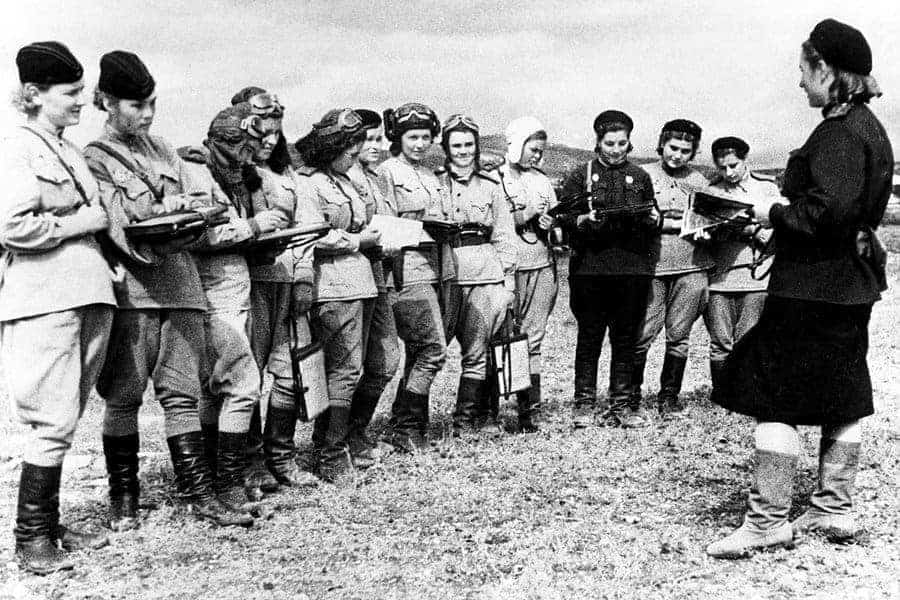In the United States, the history of the Women’s Air Service Pilots (WASP) is reasonably well known, and their heroics are celebrated. Far less is written about their Russian counterparts, the Night Witches of the 588th Night Bomber Regiment. From 1942 to 1945, this all-female squadron dropped 23,000 tons of bombs and was feared by the Nazis. Indeed, it is the Germans who gave the female pilots their nickname (because their planes sounded like a witch’s broomstick), and any Nazi pilot that downed one of the Witches was awarded an Iron Cross.

Formation of the Witches
When the Soviet Union became embroiled in World War II, women were initially forbidden from entering combat. The attitude of the Soviets quickly changed when the Germans started laying waste to their territory. On October 8, 1941, Stalin ordered the deployment of three female air force units. Colonel Marina Raskova oversaw the establishment of the units although only the 588th remained entirely female for the duration of the war.
Raskova was already renowned as a pilot of considerable skill, and in 1938 she broke the world record for a non-stop direct flight by a female with two other women. The trio flew their aircraft some 6,000 kilometers from Moscow to the southeast of Siberia. When they arrived in Siberia, their plane froze and was destined to crash. Raskova brilliantly navigated the plane to safety, and all three women survived. They received the Hero of the Soviet Union medal, and Raskova’s achievements played a significant role in persuading Stalin to form the female regiments.
By November 1941, the situation looked desperate for the Soviets as the Nazis placed Leningrad under siege and were less than 20 miles from Moscow. The Soviet air force was all but grounded so the new regiments had even more responsibility. The ranks of the 588th swelled in early 1942 with the majority of pilots aged 17 to 26. Raskova quickly asserted her authority and the pilots were left in no doubt as to the importance of their role.
Each pilot received standard military boots, poorly fitted uniforms designed for larger male troops, and they all cut their hair short. The first challenge faced by the 588th was the poor quality of their equipment. They only had Polikarpov Po-2 aircraft; plywood framed planes with canvas pulled over them. They were terrible even by the standards of 1942! Perhaps worst of all, the aircraft were slow, light, and had no armor.
The planes also had an open cockpit, so the women had to endure the bitter Soviet weather as they flew; frostbite was a common complaint! On the plus side, the planes had a slower stall speed than enemy craft which meant they were hard to target. It was also incredibly easy to fly the aircraft, and the pilots could take off and land just about anywhere.
Despite the poor quality of their planes, the Night Witches were enthusiastic about their role in the war and embarked on their first mission on June 8, 1942, a three plane raid on a German division headquarters. The mission was a success although the Witches lost a plane.

